June 09, 2025
9 min read
Football May 29, 2025 11:58 AM Mike Montoro Story Links MORGANTOWN, W.Va. – The 2025 game times and broadcast partners for West Virginia’s first three football games and the Friday night matchup at BYU have been announced by the Big 12 Conference office and ESPN. Coach Rich Rodriguez‘s second tenure at West Virginia officially begins […]
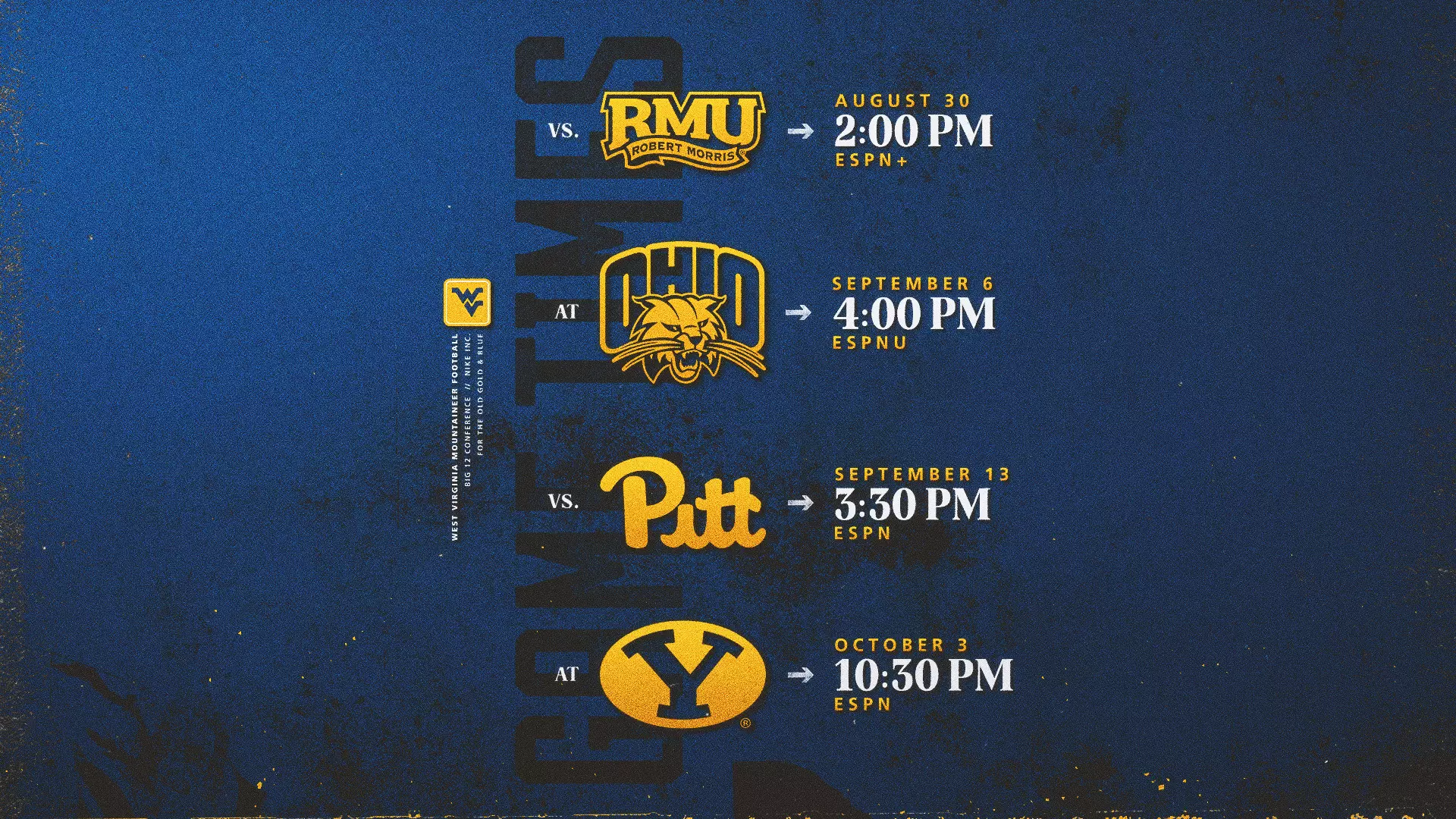


Football
Mike Montoro
MORGANTOWN, W.Va. – The 2025 game times and broadcast partners for West Virginia’s first three football games and the Friday night matchup at BYU have been announced by the Big 12 Conference office and ESPN.
Coach Rich Rodriguez‘s second tenure at West Virginia officially begins with the season-opener at Milan Puskar Stadium on Saturday, Aug. 30, at 2 p.m. against Robert Morris. The first-ever game between the two schools will be televised on ESPN+.
The Mountaineers travel on Saturday, Sept. 6, for game two against Ohio University in the 18th meeting between the schools. This year’s contest marks the first time the two teams have played in Athens, Ohio, since 1949, and the sixth time it has not been played in Morgantown. The game will be played at 4 p.m. on ESPNU.

ESPN has selected to televise the Sept. 13 “Backyard Brawl” against Pitt at Milan Puskar Stadium at 3:30 p.m. The 108th meeting between the schools marks the final year in the current series with the new contract beginning in 2029.
West Virginia’s game at BYU in Provo, Utah, on Friday, Oct. 3, will be televised by ESPN at 10:30 p.m., ET.
Starting with the Sept. 20, Big 12 opening matchup at Kansas, the conference game times and network partners will be released on either a 12-day or six-day window prior to the date of the game.
Season tickets are now on sale for West Virginia’s six-game home schedule and can be purchased online at WVUGAME.com.
The 304 Mobile Pass season ticket option returns this season as the most affordable season ticket options! The price will be $304 plus fees for all six home games this season, a 20% savings compared to that of a traditional season ticket. There is no Mountaineer Athletic Club (MAC) per seat contribution associated with this season ticket option. Unlike a traditional season ticket, the 304 Mobile Pass gives purchasers a randomly assigned seat in Milan Puskar Stadium for every regular season home football game during the 2025 season. Each game fans will have a different seat in an upper level or south end zone section. Fans can purchase the 304 Mobile Pass, HERE.
At this time due to high demand, the Pitt game on Sep. 13 is only available in season ticket packages to the general public. Single game tickets to the Backyard Brawl will not be available through the Mountaineer Ticket Office.
It’s been coming down the pipe for years, but it finally happened — college athletics has forever changed with revenue sharing thanks to the House v. NCAA settlement. Now, the door’s been removed from its hinges for a new era in what was formerly known as amateur sports. Last week’s $2.8 billion, 10-year settlement ushers in […]

It’s been coming down the pipe for years, but it finally happened — college athletics has forever changed with revenue sharing thanks to the House v. NCAA settlement. Now, the door’s been removed from its hinges for a new era in what was formerly known as amateur sports.
Last week’s $2.8 billion, 10-year settlement ushers in backpay for previous student-athletes who missed out on name, image and likeness opportunities and beginning July 1, colleges are allowed to pay current players directly. There’s an expected $20.5 million on the table per school to share with their players in the upcoming academic year with a new revenue sharing cap that increases by at least 4% every year — except Years 4, 7 and 10 when Power Four revenue baselines are determined — for the next decade.
Most of the money will be earmarked for football (estimated 75%) and men’s basketball (~15%), with the rest being dispersed to women’s basketball (~5%) and other sports (~5%).
The biggest winners and losers from House v. NCAA settlement: Amateurism is dead and the class divide grows
John Talty
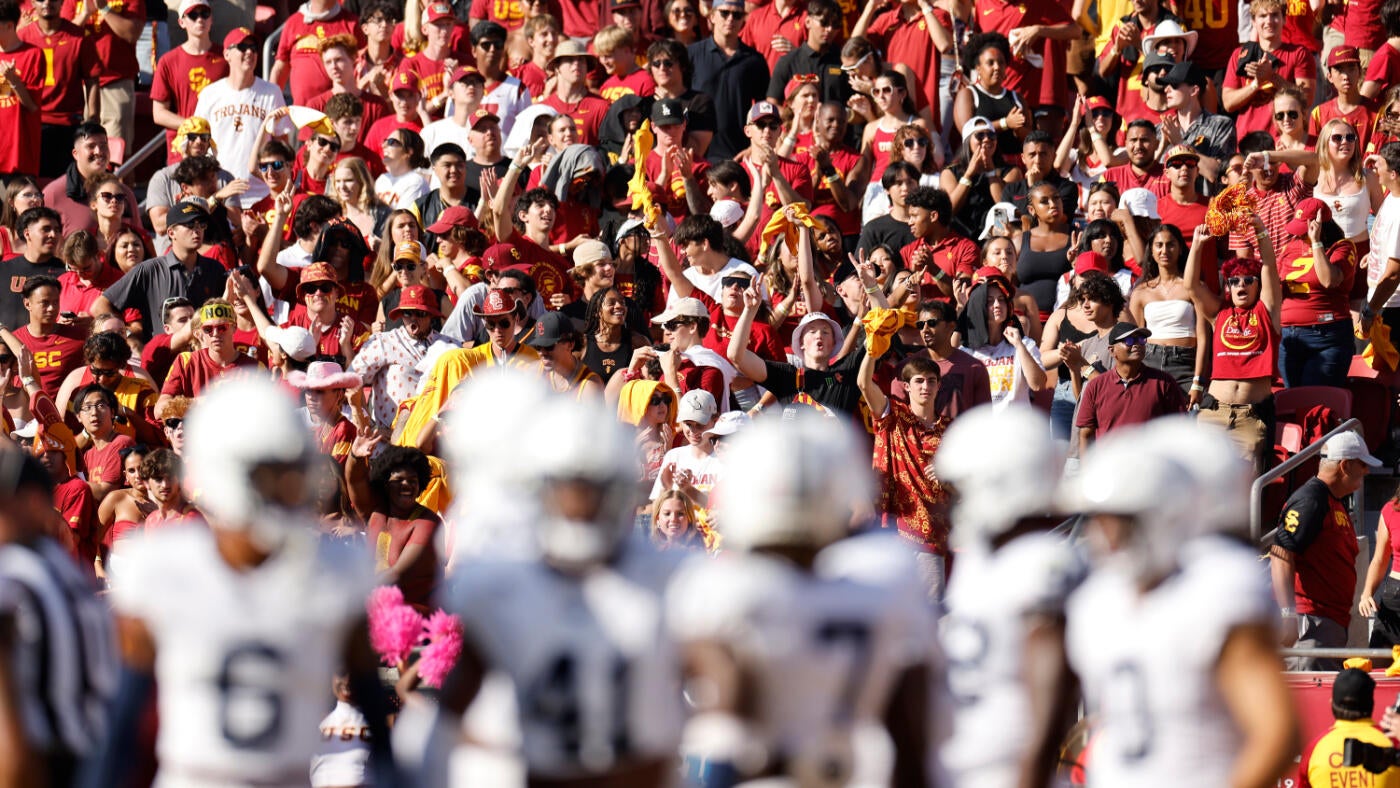
Here’s a couple quick opinions on the landmark decision and how things may look moving forward:
TCU reaching the national championship game a few years ago piqued interest, as did Cincinnati and Boise State reaching the playoff as Group of Five surprises. Should we expect more of the same in the coming years? If you’re fans of a Power Four program, you bet, and at a few others, there’s an enhanced chance for annual success. Glancing at the recruiting powerhouses within college football and basketball in the modern era, most have various factors in common: rich history, incentivized exposure and an opportunity to star at the highest level. You can wear a blindfold and generally guess how many five-stars Duke will sign on the hardwood or Georgia’s placement at the top of the SEC’s food chain.
However, since the playing field will be closer to level financially, it’s no guarantee a five-star quarterback would sign with Ohio State over Maryland moving forward, for example, if the Terps are offering a more handsome contract through direct revenue sharing. While the notion of the Buckeyes “buying” their national championship last season with a reported $20 million roster received pushback, Ohio State’s no longer one of the only handful of programs who can afford payroll that expansive in the new era.
We’ve already seen early reminders at the top of the recruiting board for the nation’s best players the last two cycles that all the prized fish aren’t necessarily being lured by the the title-contending, biggest yachts in the sea. Per 247Sports’ individual player rankings, 25 different Power Four programs have signed at least one five-star since 2024’s early signing period. That number dwarfs the five-star disparity across the modern era in any other two-year sample size. SMU, Georgia Tech, Nebraska, Texas Tech and Colorado are among the programs who have landed their highest-rated prep signee ever during that stretch.
Casuals say preseason polls are meaningless, right? Well, media shapes the national discussion every offseason and there’s a certain expectation for teams inside the top 15 every year to show out. There’s a built-in bias there from bluebloods getting the benefit of the doubt thanks to the same dozen or so programs signing the top talent year after year. That’s going to change with revenue sharing. Teams will have to consider their “payroll” or sorts and determine where money will be spent and at what positions.
During the first year of the expanded playoff, three SEC teams who were ranked throughout the regular season missed out on the bracket with three losses, including playoff mainstay Alabama. Why do you think SEC commissioner Greg Sankey and others from the Big Ten are advocating for four auto-bids from those leagues in the next portion of playoff expansion and harping on strength of schedule? It’s growing increasingly more difficult to go unbeaten with better balanced schedules and more competitive conferences from top to bottom, and that’s going to continue with revenue used to fund rosters.
In December, college basketball’s top recruit, AJ Dybantsa, committed to BYU over traditional power Kansas and North Carolina in an unprecedented move. Part of the Tar Heels’ sales pitch to Dybantsa was the opportunity to follow in the footsteps of Michael Jordan and Vince Carter, along with spotlighting the potential of future career earnings through endorsements deals like Zion Williamson’s contract with Nike after he starred at Duke over in-state finalist — and non-traditional power — Clemson.
Instead, BYU was able to match Dybantsa’s reported asking price of $5 million through its collective, and that deal is considered the largest for any incoming college basketball player ever. Moreover, transfer portal signings have further shifted the balance of power in college basketball, and the days of the top-five teams in the country gobbling up all the elite signings are evaporating.
What happens when boosters figure out their massive annual contributions to a football program may not result in an automatic nationally ranked finish that carries playoff buzz every December? It’s coming. We’ve already seen athletic directors and figureheads at elite programs asking fans to “fight back” and help fund respective rosters with the talent disparity shrinking within major conferences. With this new revenue sharing commitment that all Power Four programs are dealing with, where’s the ROI for the most deep-pocketed donors?
We’ve already seen a groundswell of schools using social media to rally its fanbases and ask for donations after big wins or momentum-changing announcements. How often over the last year alone have you seen fans complaining about funding salaries for players, many of whom are signing year-to-year deals and wanting an enhanced contract at its conclusion? Without a sense a loyalty and the transfer portal being a dip into free agency, it seems many fans — and worst-case scenario, boosters — could become disinterested in donating to the cause.
The last thing these major programs across football and basketball want is wide variance in booster support if those contributors are unwilling to assist in funding annual rosters and tossing extra funds on top of what schools receive through TV contracts, conference revenue dispersement, ticket sales and other guarantees. All this being said, you can still the football-first entities around college sports — programs like Texas, Oklahoma, Georgia, etc. — to have higher budgets than others.
Those within NIL offices have to be sweating right now. How about the “agents” who have reaped the benefits of unregulated NIL over the last few recruiting cycles? There’s a “fair market” review process in place now for third-party deals, and there will be enhanced scrutiny on partnerships thanks to the College Sports Commission (CSC), an oversight arm of sorts. With virtually no parameters previously, pay-for-play checks that were hidden as marketing agreements in the past must pass the sniff test with these changes.
NIL is not being eliminated, but it will be curbed and its impact far less important thanks to the rules adjustments and players having opportunities elsewhere through revenue sharing that could be far more lucrative.
Various reports indicate collectives hurried to finalize multi-million dollar with franchise-caliber players before this House settlement ahead of the July 1 switch. Any athlete who receives $600 or more through an NIL deal must report that partnership to the new enforcement arm later this summer. The contract will then be further evaluated to determine if the NIL parameters meet a “valid business purpose” and are within “a reasonable range of compensation.” How that is defined in terms of legitimacy, no one knows.
As CBS Sports’ Brandon Marcello appropriately put it, “the NCAA’s 119-year amateurism model died Friday with a judge’s pen,” and he’s right. Any key contributor for your favorite college football or basketball team moving forward will be paid, handsomely, with “cost of attendance” being a laughable phrase from yesteryear. Those stale arguments about tuition, housing and meals provided to scholarship athletes being enough are extinct and, bluntly, have been for years.
While most agree paying college players is long overdue with events like the College Football Playoff and NCAA Tournament generating hundreds of millions, there was an essence of purity within intercollegiate athletics that brought a special sense of pride to the playing field. Let’s stop pretending any of that was authentic in recent years.
College athletic directors will meet this week in Orlando for the annual NACDA (National Association of Collegiate Directors of Athletics) convention, with the approved House settlement being the main topic of discussion. There’s plenty of questions left to be answered, and not a lot of time to figure them out, as payments to players begin […]
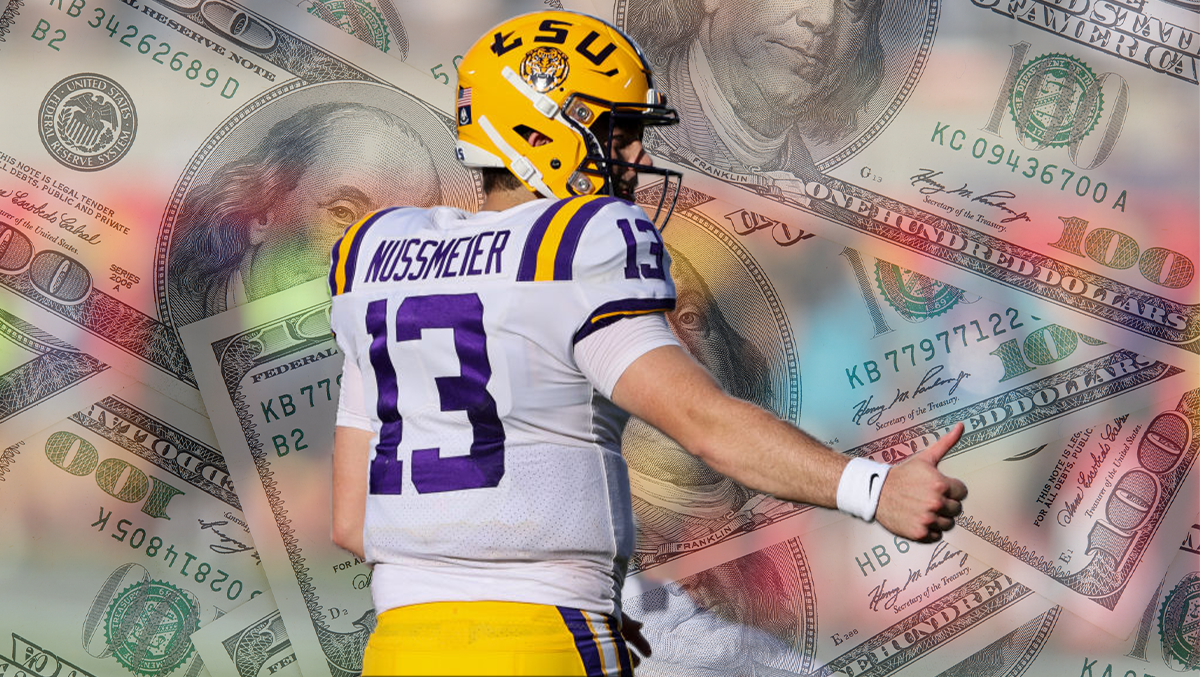
College athletic directors will meet this week in Orlando for the annual NACDA (National Association of Collegiate Directors of Athletics) convention, with the approved House settlement being the main topic of discussion. There’s plenty of questions left to be answered, and not a lot of time to figure them out, as payments to players begin July 1st.
But, piecing this all together is going to be a tall task, for the time being.
Now that players are set to start being paid by the schools themselves, this is going to lead to athletic departments having to make a number of tough decisions about how they will afford this new venture.
How in the world does everyone stay on a level playing field moving forward? That was the intention of the House settlement, right?
No, this is going to get very murky, quickly. While the conversations around how these schools will afford to pay these players have been ongoing for upwards of two years, reality has set in for athletic directors across the country.
To pay for these new salaries, schools will use money generated from ticket sales, media rights, concessions and any other type of revenue that comes from sports on campus. Yes, this even means your ticket prices will increase if you haven’t already seen it. Some schools have already implemented a ‘talent fee’ for each ticket purchased by fans, but that will most likely increase over time.
The biggest question coming off the approval from Judge Claudia Wilken doesn’t center around the monetary gains from athletes. No, plenty of administrators are wondering when the next lawsuit will be filed, with some type of grievance from the settlement being used as the vocal point of litigation.
At the center of this new era in college athletics is the $20.5 million being the revenue starting-point for schools to spread out between different sports on-campus. Most ADs are going to upset athletes who participate in non-revenue-generating sports, simply because football and basketball are paying the bills.
How much will the softball or track and field team make next season? Not much, if it doesn’t come from outside NIL deals from companies willing to spend money on sports that don’t garner the same type of viewers as football or basketball.
The main point of concern is teams putting together NIL deals for players that carry a name that is big enough for a company to see a return on investment. The fact is, most athletes aren’t known outside the campus boundaries, or within the fan base.
And now, each NIL deal that is over $600 will have to be presented to a clearinghouse that will determine whether it’s legitimate or not.
“How are they going to say one deal is different from the other,” one athletic director pointed out to OutKick. So, every time our school or a third party has an idea for a partnership that exceeds $600, we’re at the mercy of this system that will determine if it’s legit. What happens when an athlete decides not to disclose their ‘NIL’ deal with the clearinghouse, and just pockets the money from a booster?
“These are the types of scenarios that will present themselves in the short term. We have no idea how the system is going to work, and you’re going to have players get their deals rejected. This will only lead to further lawsuits. This will be a non-stop problem in the first year. But, we have to find ways to raise more money, as well. The high-profile schools aren’t just spending $14 to $16 million that rev-share allows. If we want to keep up, there has to be an influx of money, and we’re just talking about one year.”
This athletic director isn’t wrong. While plenty of people want to act as if this settlement will not lead to the ‘old days’ returning, my question is, how can it not? If a school agreed to a $3 million contract with the star receiver, but can only pay half of the deal because of the revenue-sharing cap, you think that player is going to take a cut?
Heck no, they want what was agreed upon, and the minute one NIL deal is denied, there will be further litigation. According to the College Sports Commission, if a deal is denied, both parties can enter ‘neutral arbitration’ that starts with an appeal.
One of the biggest problems that will come from this settlement centers around how much money each program will get from the $20.5 million.
If the football team is going to get 75% of the allowed $20.5 million, that doesn’t leave a lot for the other athletic programs on each campus. Let’s just say the basketball team gets 15%. That leaves just 10% for softball, soccer, Olympic sports, volleyball and even baseball.
This is where it gets tricky for some powerful schools. There will be plenty of athletic departments that decide to give the baseball or basketball program a bigger share. The schools that don’t have a football program are going to reap the benefits of the settlement, and could put 75% towards the basketball team. Well, that will certainly lead to some programs being able to afford to put together a more powerful team on the court, compared to the school only setting aside $3 million.
See where I’m going here?
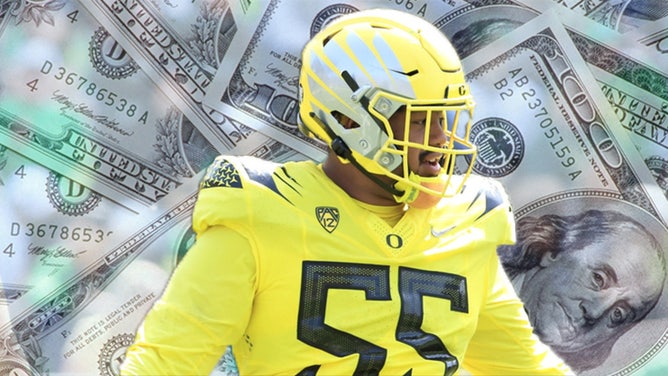
It’s going to cost more than the allotted rev-share if schools want to compete for national titles.
There are going to be plenty of arguments within the same athletic department regarding how much money is allocated to each sport, and it will get contentious.
“It’s really going to be a sh-t show moving forward,” a Big Ten AD told OutKick. What’s that saying, ‘Winter Is Coming’? I’ve already had coaches from the softball and baseball programs telling me how much they need to compete with other schools, with the transfer portal open. But, we just don’t have that much money lying around to give them what they need at the moment, just to keep up with another program who decided baseball is more important than basketball. We’re trying to find it though.
“Thank goodness our school has a good accountant, because my phone hasn’t stopped blowing up from coaches who feel as though they’ll be left out. And, I don’t blame them for harping on me for money, because this is our new reality. It’s going to be a fight.”
As the athletic directors from a variety of schools meet this week in Orlando, plenty of them are going to have to put their guards down. If college athletics are going to get this right, they had better start sharing some ideas, without giving away confidential trade secrets.
We are three weeks away from schools paying athletes directly. So, the clock is ticking on how AD’s make this work, knowing they’re going to upset a lot of people around college campuses across the country.
Game on.
A new era of college athletics is here, as Judge Claudia Wilken approved a multibillion-dollar legal deal, as schools can now pay athletes directly. CBS Sports’ Chip Patterson offers his thoughts on the settlement, Mike Elko’s program and much more. Key notes from Chip Patterson interview We aren’t moving in the wrong direction. We’ve changed the […]
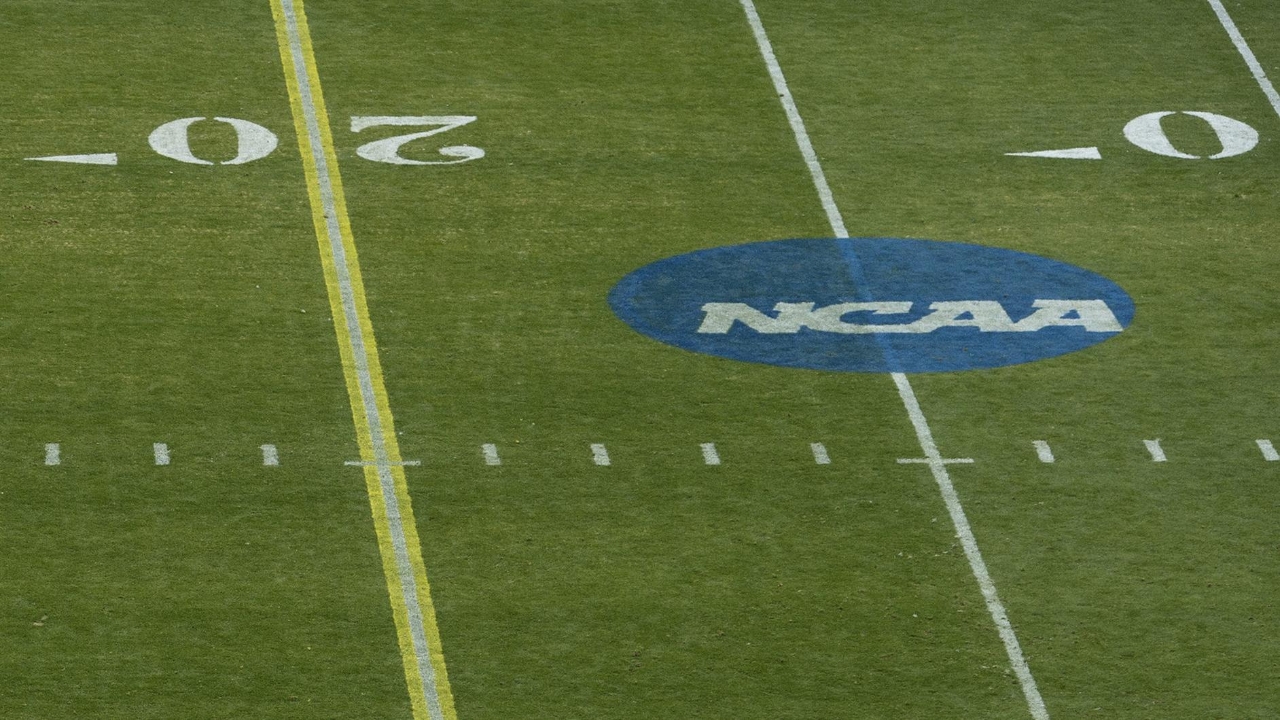
A new era of college athletics is here, as Judge Claudia Wilken approved a multibillion-dollar legal deal, as schools can now pay athletes directly. CBS Sports’ Chip Patterson offers his thoughts on the settlement, Mike Elko’s program and much more.
June 09, 2025 9 min read Add topic to email alerts Receive an email when new articles are posted on Please provide your email address to receive an email when new articles are posted on . Subscribe Added to email alerts We were unable to process your request. Please try again later. If you continue […]
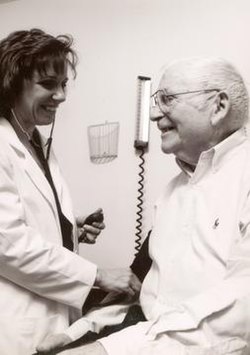
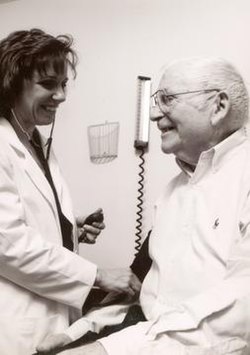
June 09, 2025
9 min read
The ruling of the United States Supreme Court in National Collegiate Athletic Association v. Alston, 2021, paved the way for collegiate athletes to monetize their name, image and likeness.
Since then, the professionalization of amateur athletics has evolved rapidly, with name, image and likeness (NIL) policies expanding to apply to high school athletes in states where it has been legalized. However, many physicians fear the rapid, unregulated growth of NIL may put physicians and amateur athletes at risk.


Eric McCarty
“If done the right way, NIL can be very good,” Eric McCarty, MD, chief of sports medicine and shoulder surgery at the University of Colorado School of Medicine and head team physician at the University of Colorado, told Healio. “But right now, it is out of hand and continues to take turns and courses that put a lot of entities and people in an uncomfortable position.”
When treating an athlete with NIL opportunities, Robin V. West, MD, president of the Inova MSK Service Line and team physician for the Washington Nationals, said there are new considerations for both the athlete and the physician.

Robin V. West
“As a surgeon, the shift is that these athletes are viewing their bodies from more than just the medical or injured aspect but looking at them as business assets,” West, a Healio | Orthopedics Today Editorial Board Member, said.
Because of that shift, Brian D. Anderson, JD, partner and global head of the sports industry team at the international law firm Sheppard Mullin, said physicians need to recognize that high school or collegiate athletes with NIL opportunities should be treated like professional athletes.

Brian D. Anderson
“It does not change the underlying diagnosis and medical advice, but it is more about appreciating the stakes and the pressures that are involved,” Anderson told Healio.
The addition of high school athletics to the NIL landscape poses its own set of unique challenges, according to West.
“This is a different kind of liability because now they have these high school athletes who potentially could earn $8 million a year,” West told Healio. “But if they tear their ACL their senior year and you reconstruct it and they do not get back to play, then all of a sudden are you then bound to that $8 million a year that he potentially could have made?”
Anderson also said high school or collegiate athletes with NIL opportunities may have NIL representatives, agents, accountants and parents involved in their careers and wanting a say in the decision-making process. To navigate the pressures that external stakeholders may place on athletes, Anderson recommends athletes have adequate legal representation and emphasized the importance of involving family, guardians and loved ones to help look out for the best interested of the young athlete and provide crucial support.
“I would recommend having a lawyer and a trusted advisor to help navigate [NIL] issues,” Anderson said. “There are a lot of intermediaries involved that may not have [the athlete’s] best interests in mind. At the high school level, most of these athletes are not legally allowed to sign a binding contract. The parents need to be involved and sign the contract as well to make sure it is enforceable.”
In addition to the physical demands athletes may already experience from performing on the field, NIL has introduced an increased mental burden as well, according to Alex B. Diamond, DO, MPH, FAAP, FAMSSM, professor of orthopedic surgery, pediatrics and neurological surgery at Vanderbilt University Medical Center and team physician for Vanderbilt University.

Alex B. Diamond
“It is that dual threat of they are just regular people like the rest of us, and they go through the same things we do, but they also have this entirely separate world that is complex and intense and public that can affect their health and well-being,” Diamond told Healio. “NIL only acts to amplify all of those things.”
He said student athletes from disadvantaged backgrounds may even become “breadwinners” for their families in the NIL era, which can pose additional pressure to provide at such a young age.
The sense of a student athlete’s self-worth may also be tested by the pressures of NIL contracts and opportunities, according to Peter J. Millett, MD, MSc, orthopedic surgeon and partner at The Steadman Clinic in Colorado. Because athletes may associate self-worth with performance, he told Healio an athlete may begin questioning their self-worth after an injury that may prevent them from playing.

Peter J. Millett
“Sometimes there is a level of grief that sets in, an imposter syndrome type situation where they start to feel like maybe they were not as good as they thought they were, or they did not reach their potential because of this injury,” Millett, a Healio | Orthopedics Today Editorial Board Member, said.
Increased use of the NCAA transfer portal — a compliance tool used to manage the student-athlete transfer process — has also created challenges in the NIL landscape. According to McCarty, the transfer of student athletes can happen quickly and sometimes there is a lack of communication on where they transferred.
But just because a player may leave an institution, that does not mean they leave the physician’s care, according to Diamond.
“They are always still your patient, whether you are actively treating them or passing them along to a friend or partner or colleague,” Diamond said. “You have to do the right thing regardless of whatever emotions may be there from a school team perspective. We are part of that team, but first and foremost we are providers for that patient.”
McCarty said physicians want to be able to adequately care for student athletes transferring into their institution, as well.
“If we have an athlete coming in, we also want to take care of that athlete if they are having surgery or treatment for an injury,” McCarty said. “We want to make sure that they are taken care of when they come in and get all the records.”
However, with no national shared electronic medical record database for student athletes, physicians may not have all of the documents needed and may need to rely on the athletic trainers and administrative staff to obtain medical records from previous institutions, according to McCarty.
As NIL contracts continue to increase in value, private equity firms may start to dip their toes in the NIL pool, which may lead to some positive outcomes, such as providing more money to the athletic program, according to Anderson, who represents teams, leagues, sponsors and investors in the sports industry. He said private equity firms can also provide “expertise in professionalizing organizations that have typically been departments within nonprofit academic institutions.”
“I am sure there are efficiency gains that a smart private equity fund would be able to find and optimize,” Anderson said. “In terms of maximizing media rights and revenue generation and bringing in expertise in commercializing the stadiums and the venues, it could be a good thing.”
However, Millett said the entrance of another external stakeholder would only further increase the risk and liability placed on physicians as there may be “significant legal ramifications for poor outcomes.”
“The medical responsibility gets heightened, and if there are increased financial incentives, you can argue if there is a bad outcome that there are bigger lost earnings. It creates a situation that can be challenging,” Millett said.
According to Diamond, the advanced professionalization of youth sports is a major concern, as children should participate in sports to learn the game, build fundamentals and learn about fitness and exercise.
“We are throwing those aside when we start bringing in this concept of social media likes and presence, and contracts and money,” Diamond said. “We are eroding that base of what makes sports so special at a young age.”
With the added pressures and money surrounding student athletes, Diamond said it is important that physicians advocate for their patients and provide them with an outlet for education and trust in the NIL era.
“That is where we can be effective, providing them that support and safe place,” he said. “We are an independent group that certainly care about their success on the field or court, but our only responsibility is their health and wellness. We can be a safe place for them to raise those concerns and questions with us, and we can hopefully help them navigate this new space.”
West said specialty societies can also play an important role in advocating for both physicians and athletes in the NIL landscape.
“We do not have the legal backing, but we can go and explain the surgeon’s role. We can help to identify that, define it and advocate for the surgeons, which ultimately we are advocating for our patients,” West said. “We can stay involved by understanding [NIL], by educating ourselves on the latest and greatest of what is going on with NIL and then also representing our members.”
As the NIL landscape continues to develop, Diamond said the hope is it “becomes more straightforward.”
“We see [NIL] being the Wild West right now,” Diamond said. “The hope is that the larger systems and governing bodies will start working together to provide guardrails and guidance to help with this because the structure helps the families and the kids.”
Regardless of the structure NIL takes as it evolves, Diamond said it is important to recognize that it is not going away, and physicians will need to be involved with the student athlete beyond their injury.
“We have to understand that these [injuries] affect their overall health and well-being,” Diamond said. “We need to be better about recognizing and referring to where they need to be. This is a time where we have to work as a collaborative unit. It is not just the physicians and athletic trainers, but our sports psychologists, mental health professionals and academic partners. It is using that whole network as available to the students and trying to connect them to the right people sooner rather than later.”
According to Millett, it is also important for physicians to overcommunicate with the patient and their team, and to continue to lean on their medical expertise and judgement.
“Do not get caught up in all the noise of the media or the press or the pressure from the team,” Millett said. “If the patient is ready to return to play, you can clear them. If they are not ready to return to play or it is unsafe for them, you do not clear them. If they need surgery, you recommend surgery. If surgery is optional, you tell them it is optional, and then you do a shared decision-making process to help figure out what the best solution is.”
Surgeons should also remain educated on the latest developments in NIL and participate in policy formation and advocacy of both physicians and athletes, according to West.
“The most important thing is staying athlete-centered,” West said. “As this commercialization of sports continues to grow, how do we stay true to our focus and our mission?”
Although the appropriate care of student athletes should be one of the top priorities of physicians, McCarty said it is also important for physicians to protect themselves in the face of financial risk and liability.
“It is important that the physicians make sure they have the appropriate malpractice insurance for the reason that these athletes, because they now have a value attached to them when they are in this NIL, may also have people or agents or attorneys now looking at that value in case they get hurt and cannot return,” McCarty said. “Unfortunately, that is becoming more common, and we need to make sure that physicians and any providers are protected as we do the right thing for these athletes.”
Brian D. Anderson, JD, can be reached at banderson@sheppardmullin.com.
Alex B. Diamond, DO, MPH, FAAP, FAMSSM, can be reached at alex.b.diamond@vumc.org.
Eric McCarty, MD, can be reached at eric.mccarty@cuanschutz.edu.
Peter J. Millett, MD, MSc, can be reached at drmillett@thesteadmanclinic.com.
Robin V. West, MD, can be reached at robin.west@inova.org.
Kentucky has 14 legit ballers on the team this season. This type of depth is unlike anything college basketball has ever seen. The last time the Wildcats basked in a talent pool this deep was the platoon year of 2014-15. That was a pretty good squad, to say the least, but even that team only […]
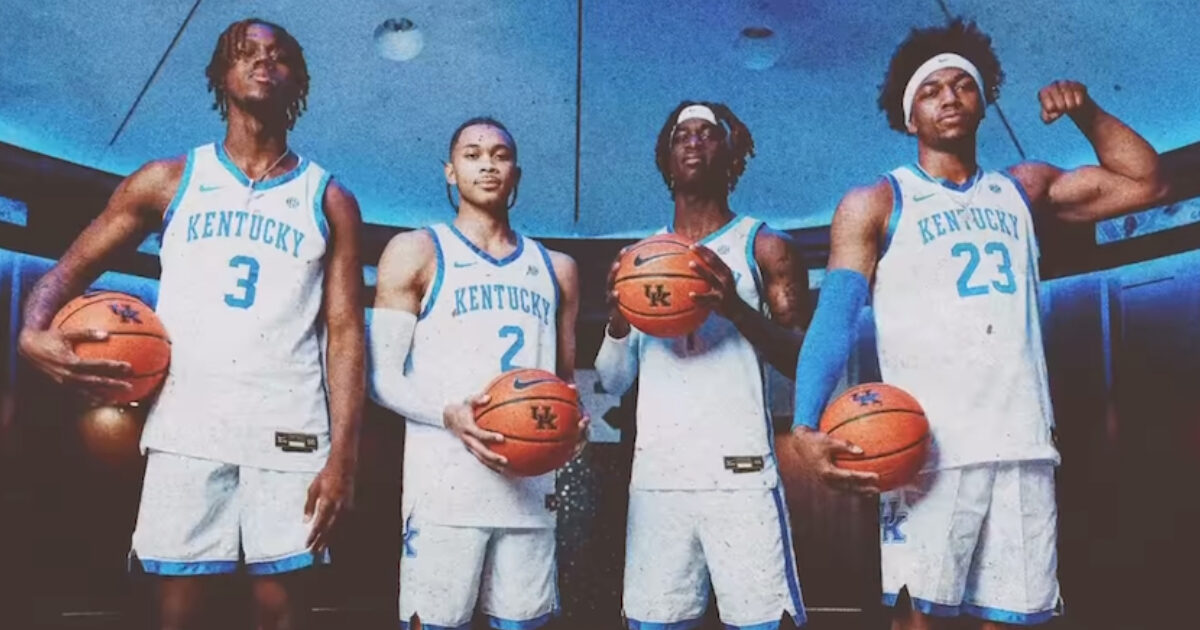
Kentucky has 14 legit ballers on the team this season. This type of depth is unlike anything college basketball has ever seen. The last time the Wildcats basked in a talent pool this deep was the platoon year of 2014-15. That was a pretty good squad, to say the least, but even that team only went 12 deep. 14 is unheard of.
Of course, 14 people create a lot of mouths to feed. Mark Pope has shown a knack for creative substitution patterns, and he’ll need to bust out a spreadsheet this year to calculate all the combination options. It is very possible that this Kentucky team could set a record for the most players to average 10 minutes or more per game.
Last season’s ‘Cats tied the record for this quirky stat with 11 players hitting the double-digit minute mark average. In fact, they almost broke it with 12, but Travis Perry finished with 9.7 minutes per game, coming up just short.
Last year’s team’s generous minute distrubution was more due to injuries than depth, but the only two former Kentucky teams to have 11 players average 10 minutes or more per game since statisticians started keeping track in 1965 were Billy Gillespie’s 2007-08 team and Tubby Smith’s 2001-02 team.
The 2025-26 Wildcats have the depth to beat this record. Not only could they get 12, but 13 isn’t out of the question, depending on how Pope manages playing time. Regardless of how many good players are on the team, there are only 200 minutes to go around each game. And we all know Otega Oweh needs to be on the court as much as possible.
As much of a kumbaya Lord Pope might be, he is going to play the best players the most. This ain’t the Pee Wee leagues where everyone gets equal time. But he is in a unique position to do something no Kentucky team has ever done, and win a lot of games in the process.
The closest Bryan Seeley has been to working in college sports was spending 40 hours a week covering them for the Daily Princetonian during his days as an undergraduate at the Ivy League school. Now, the longtime head of investigations for Major League Baseball is about to step into a brand-new role, leading a brand-new […]
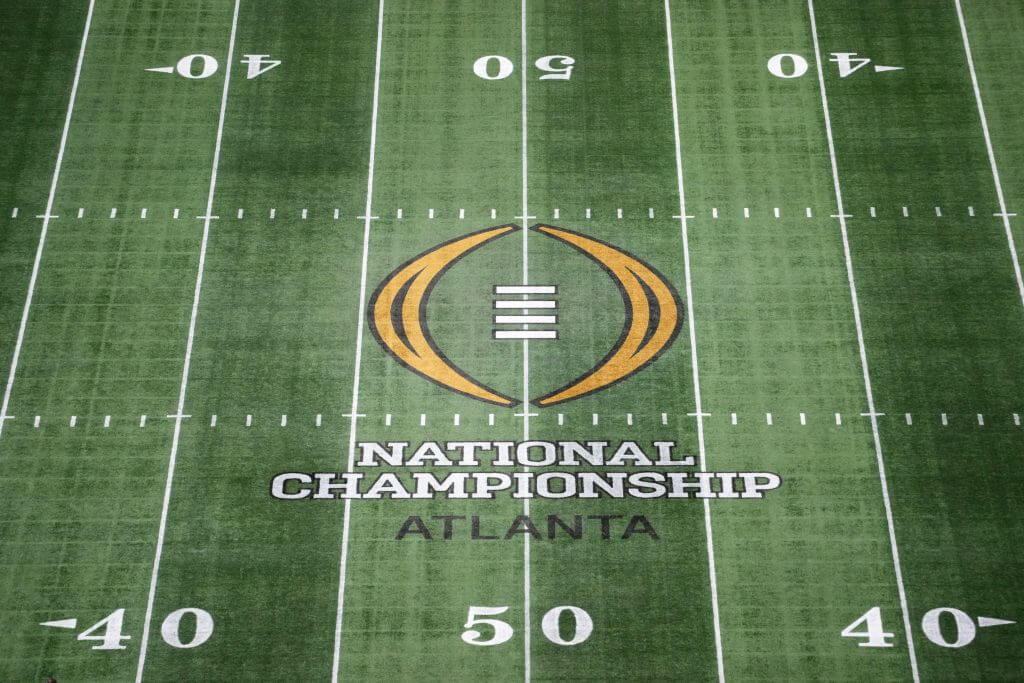


The closest Bryan Seeley has been to working in college sports was spending 40 hours a week covering them for the Daily Princetonian during his days as an undergraduate at the Ivy League school.
Now, the longtime head of investigations for Major League Baseball is about to step into a brand-new role, leading a brand-new organization, which could make him one of the most powerful people in college sports.
Advertisement
On Friday night, Seeley, 46, was named the chief executive officer of the College Sports Commission, the enforcement agency launched by the wealthiest and most powerful conferences to oversee and implement the system that will allow direct payments from NCAA schools to athletes for the first time.
The formal announcement of the CSC and Seeley’s hiring came about two hours after a federal judge approved the $2.8 billion settlement of a trio of antitrust lawsuits facing the NCAA and major college conferences.
A self-described lifelong college sports fan, Seeley brings more than a decade of experience in compliance, enforcement, investigations and policy-making at MLB, along with eight years with the U.S. Department of Justice and a law degree from Harvard.
He said he was drawn to the job by the opportunity to shepherd college sports through a period of transition and into a new era.
“I view this as an area where I can really add value,” Seeley told The Athletic on Sunday in his first interview since a press release announced his hiring.
College sports has a long history of inconsistent enforcement and skirting rules to gain a competitive advantage. The NCAA will still oversee rules related to academics and eligibility, but systems installed to regulate the revenue-sharing cap schools must adhere to, evaluate fair-market value of name, image and likeness deals between athletes and third parties and monitor roster limits will be under the purview of Seeley and the CSC.
He will report to a board made up of the power conference commissioners.
“I think this is a good, new starting point. So whatever existed beforehand does not need to be what exists going forward,” Seeley said. “Culture doesn’t change overnight. I don’t expect that to happen overnight, but I do think that the schools that have signed on to the settlement want rules and want rules to be enforced. Otherwise they wouldn’t have signed on to the settlement. I think student-athletes want a different system. So I think there is a desire for rules enforcement. There’s a desire for transparency.”
Advertisement
Seeley doesn’t have an official start date, but there is no time to waste. Universities can begin directly sharing revenue with college athletes starting July 1. The clearinghouse for evaluating third-party NIL deals for athletes worth at least $600, run by accounting firm Deloitte, goes live Wednesday.
Schools in power conferences are expected to sign formal agreements to abide by rulings made by Seeley and outside arbitrators.
“I haven’t been given assurances of anything, but I do know from my read on this, there is buy-in from the institutions,” Seeley said.
Seeley built the investigations unit at MLB, staffed with lawyers and former law enforcement officers.
“During his time at MLB, Bryan demonstrated unparalleled integrity, a commitment to fairness, and the ability to navigate complex challenges with precision and care,” Major League Baseball commissioner Rob Manfred said in a statement. “I have no doubt he will bring the same level of excellence to the College Sports Commission. College sports will greatly benefit from Bryan’s expertise and vision.”
Seeley’s first task at CSC is to again build a staff.
“These are going to be more private-sector investigations, right?” Seeley said. “We don’t have subpoena power. We don’t have search-warrant power. I’ve operated in that system for over a decade, so I’m well-suited to continue to do that with college sports.”
He added, “I think I’m one of the few people in the country who’s probably led investigations into salary-cap circumvention, and so in terms of the subject matter, at least for part of this, I have a lot of experience.”
MLB teams do not operate under a hard salary cap, but there is one for the league’s international amateur talent acquisition system.
One of the most prominent cases Seeley investigated came in 2017, when the Atlanta Braves were found to have circumvented international amateur signing rules over a three-year period. Braves general manager John Coppolella received a five-year ban for his role in the violations. In a separate investigation, Seeley’s group found the Boston Red Sox had also cheated in the international amateur market. Punishment in that case was handed down in 2016.
Advertisement
While the highest levels of college sports are becoming more similar to professional sports, Seeley pushed back on the notion that the power conferences are trying to create another pro league.
“College sports is its own unique thing, and what makes college sports great needs to remain,” Seeley said. “Some of the system we’re going to bring for enforcement is a system that has been used in the pro sports world, but it’s been used in other worlds, too. … But I don’t view this as the professionalization of college sports. Working with schools and working with student-athletes is going to be quite different than working with professional sports teams and professional athletes.”
— The Athletic’s Evan Drellich contributed reporting.
(Photo: Phil Didion / Imagn Images)


Portal Update – Basketball and Gymnastics Take Hits


Jon Jones answers UFC retirement speculation as fans accuse champion of 'holding the belt …


Xavier Legette taught Marty Smith his signature celly


Why IHOP Rode With Dale Earnhardt Jr. In Amazon NASCAR Debut


2025 NCAA Softball Tournament Bracket: Women’s College World Series bracket, schedule set


NCDC Commitment Profiles: Cyclones’ Martins Moving On to Saint Anselm College • USPHL


Today in the MHSAA


Oregon track star wages legal battle against trans athlete policy after medal ceremony protest


IU basketball recruiting


'I asked Anderson privately'… UFC legend retells secret sparring session between Jon Jones …